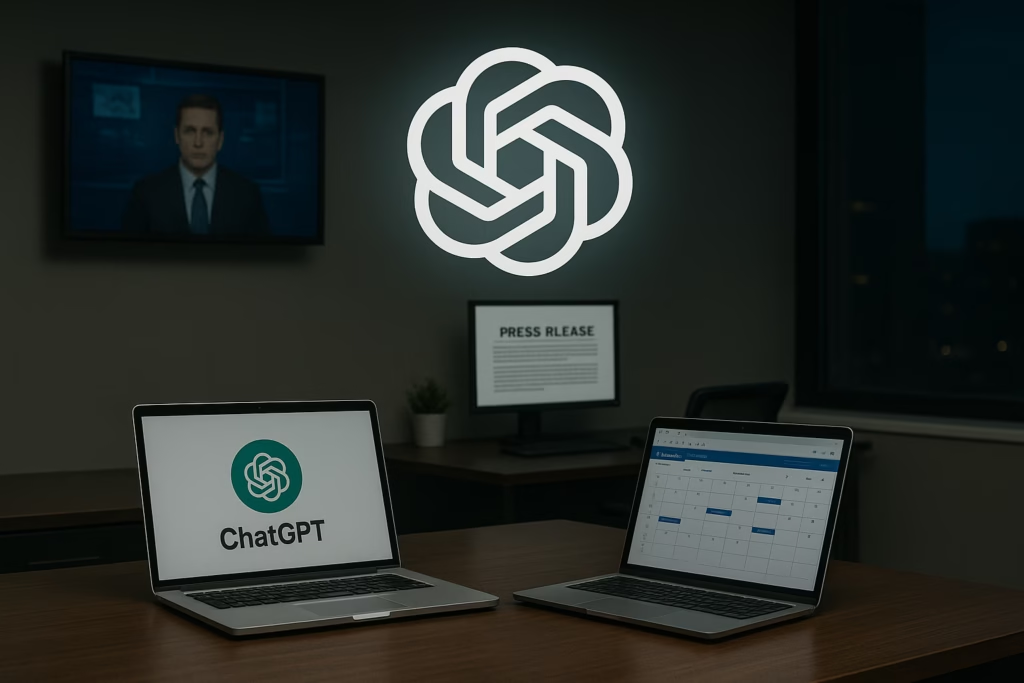
Monday May 19, 2025
How to Use ChatGPT for Media Relations
However, using ChatGPT effectively is not about handing over your job to an LLM (Large Language Model) – the key is how you prompt it. As the Editor in chief of PR Daily, Allison Carter noted, “the more information you can give it, the more likely it’s going to find what it needs in the prompt.” In other words, context is everything.
This blog walks you through the entire media relations process, showing where and how to use ChatGPT at each step with prompts you can actually use.
Strategic Intelligence Gathering
Before approaching the media, it’s vital to understand the landscape around your client and their competitors. ChatGPT can help you quickly distil patterns and opportunities.
a. Competitor Coverage Analysis: Use ChatGPT to scan how competitors are positioning themselves in the media. This helps shape your own narrative.
Prompt: “Analyse media coverage of [Competitor Name] from the past 6 months. Identify the key themes, most frequent outlets, and any shifts in messaging.”
b. Client Message Clarity: Feed in your client’s past coverage, press releases, and mission statement to extract their strongest—and weakest—narrative points.
Prompt: “Summarise the key brand messages from these past press releases and media articles from [Client Name]. Suggest areas for improved clarity or consistency.” (Upload or copy and paste past press materials to give context to the LLM))
Generating Story Angles
The media values interesting angles. The better your framing, the more likely you’ll get interest. ChatGPT is helpful in workshopping those angles early.
a. Story Ideation: Brainstorm a range of story hooks and media angles that connect to industry trends or seasonal relevance.
Prompt: “Suggest five unique story angles for pitching [Topic] to national business publications, considering recent trends in [Industry].”
b. Tailored Relevance: Pressure-test your angle’s appeal across different media beats to ensure flexibility and relevance.
Prompt: “How could a story about [Topic] be made relevant to a technology editor, a consumer lifestyle journalist, and a trade magazine editor?”
Drafting Press Releases
Press releases are a staple of media relations, but writing them from scratch can be slow. ChatGPT accelerates the first draft phase and can help you adapt for different audiences.
a. Initial Draft Foundation: Get a structured first draft quickly so you can focus your energy on refinement and final tone.
Prompt: “Write a press release announcing [Announcement], including a quote from the CEO, context about the market opportunity, and a CTA for journalists.”
b. Outlet-Specific Versions: Adapt the same release for different publications by mimicking their preferred structure and style.
Prompt: “Rewrite the press release for [Publication Name]. Prioritise an analytical tone, avoid promotional language, and lead with data.”
ChatGPT can produce better quality outputs if you also upload reference documents that have relevant context, articles and links. You can also add templates or best practice examples to help guide LLM’s into specific outputs.
Craft Effective Pitch Emails
The pitch email is often your first and only chance to get attention. ChatGPT can help you write subject lines, shape hooks, and build personalised intros.
a. Customised Pitching: Generate email drafts that are specific to the journalist, outlet, and pitch angle, using the right tone and news value.
Prompt: “Write a covering email for a technology editor at [Publication Name]. Introduce the press release, highlight the news value, and suggest an interview opportunity.”
b. Subject Line and CTA Variations: Explore a range of subject lines and calls to action to test which feel clearest, sharpest, or most clickable.
Prompt: “Suggest five concise subject lines for a media pitch about [Topic] that are professional and engaging.”
Building Targeted Press Lists
While ChatGPT can’t replace a verified media database, it can support research by helping brainstorm outlet ideas and media beats you may not have considered.
a. List Inspiration: Prompt ChatGPT to surface relevant journalists, their focus areas, and what types of stories they’ve run.
Prompt: “List 10 UK journalists who frequently cover [Industry or Topic], and briefly describe what they typically focus on.”
Note: Always verify contacts through trusted PR tools or manual research.
Evaluating Media Coverage
After your story goes live, it’s time to assess the impact. ChatGPT can help synthesise qualitative coverage insights quickly.
a. Sentiment Review: Use prompts to classify articles based on tone and spot trends in how the story is being received.
Prompt: “Analyse the tone of these five articles about [Client Name]. Classify each one as positive, neutral, or negative, and explain why.”
b. Message Detection: Determine whether your core messages came through in coverage—and if not, why.
Prompt: “Did this article reflect our key messages about [Product/Service]? Identify what was missing or misrepresented.”
Training ChatGPT on Client-Specific Information
The more you feed it, the better the outputs. With structured inputs, ChatGPT can sound closer to your client’s voice over time.
Prompt: “Based on the following company profile and past coverage, draft a media pitch for their next initiative.”
This builds a light layer of personalisation into your workflow, without needing formal fine-tuning.
Common Pitfalls to Avoid
- Don’t copy-paste blindly – always fact-check, edit, and localise outputs.
- Never share confidential info in public models – ChatGPT doesn’t retain data across sessions, but it’s still not secure for sensitive comms.
- Don’t rely on it for strategy – it’s great at execution, but weak on strategic nuance.
AI doesn’t replace your judgment. It just makes it easier to move from idea to draft.
Basic ChatGPT Prompting Rules
- Be specific: Clearly define what you want and who it’s for.
- Provide context: Always set the scene with the ‘why’ and the objective.
- Set boundaries: Mention tone, length, format, and structure.
- Iterate: Review and refine until it hits the mark.
Media relations is still about relationships, timing, and trust. ChatGPT can’t replace those. But it can speed up your thinking, sharpen your writing, and surface new angles faster than you could on your own. By feeding ChatGPT the right context and guidance, you’ll get outputs that sound human and on-brand. Start small. Prompt smart. And treat it like a partner, not a crutch.
Curzon PR is a London-based PR firm working with clients globally. If you have any questions, please feel free to contact our Business Development Team bd@curzonpr.com







Follow us